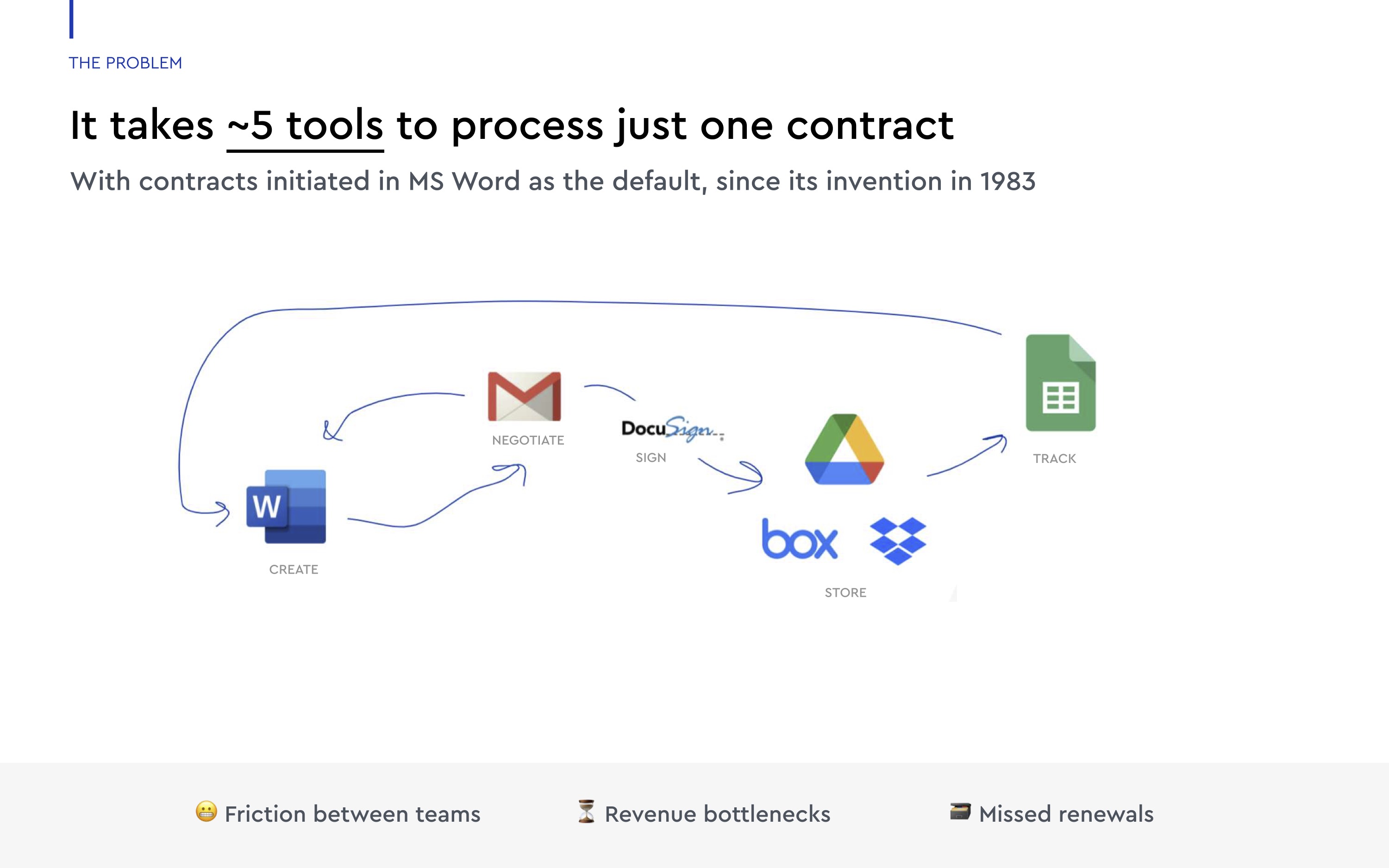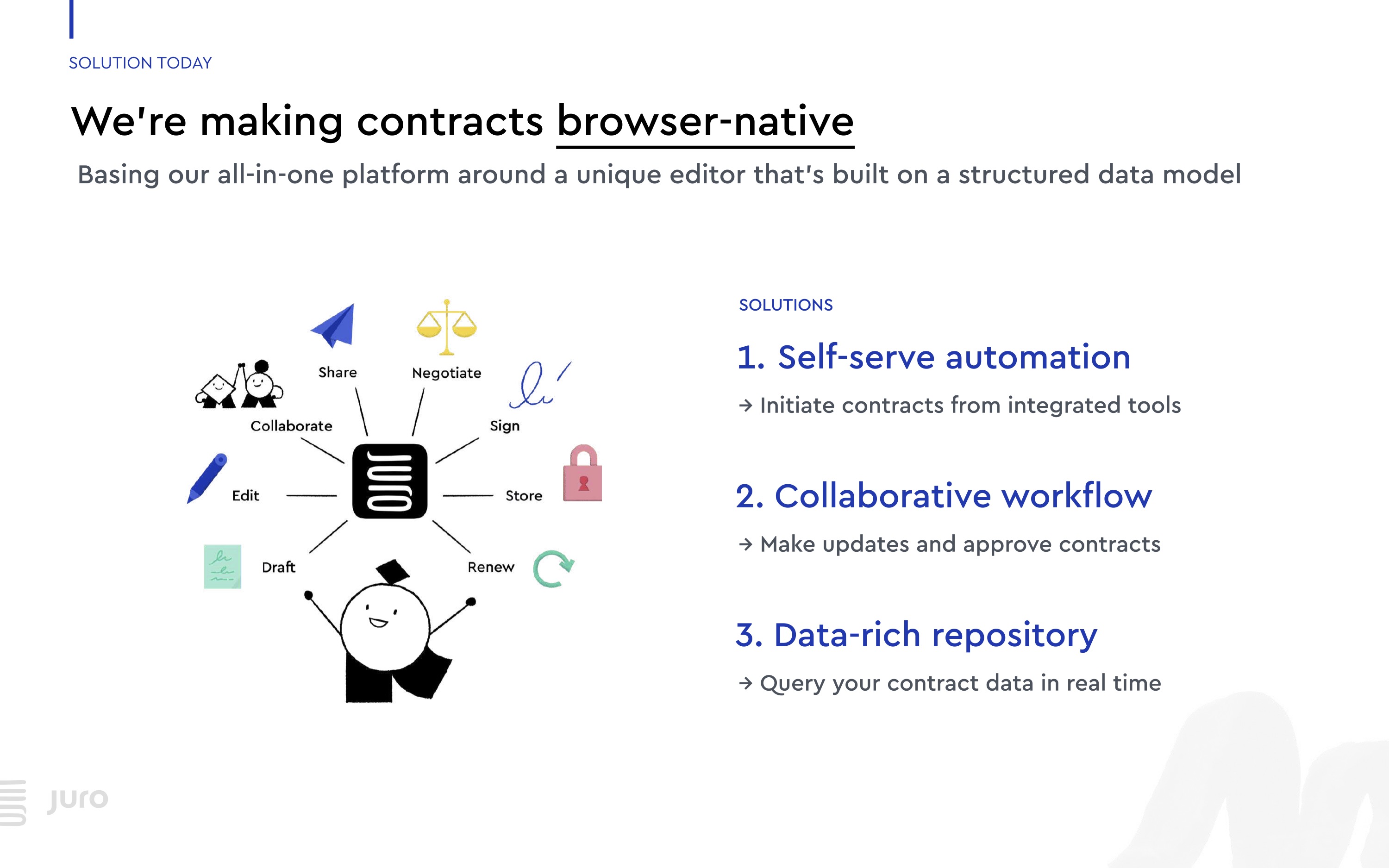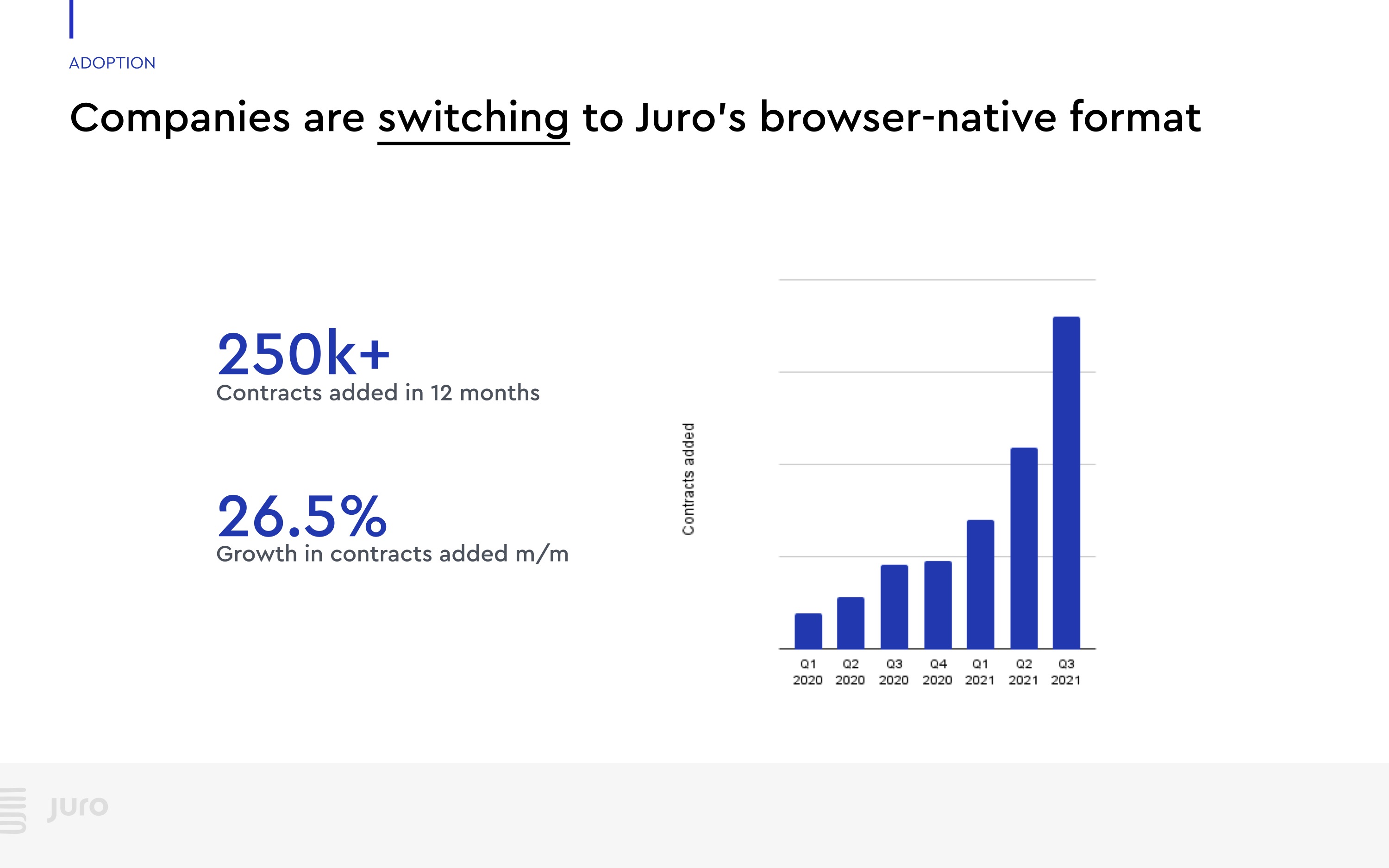Back in January, Natasha covered Juro’s Series B round, which added $23 million to its coffers. Juro aims to put an end to contract negotiation madness, moving the workflows out of Microsoft Word and a handful of other sub-par tools to an all-in-one, web-based platform for contract negotiation-to-signature workflow. It seems like a very good idea. The deck worked; it helped Juro raise a fine stack of dollars. But is its deck any good? Let’s take a closer look.
We’re looking for more unique pitch decks to tear down, so if you want to submit your own, here’s how you can do that.
Slides in this deck
The company used a 15-slide deck, which it shared with TechCrunch, making only some light redactions; all the slides are there, but the company blurred out part of its future road map and the actual numbers for the financials.
- Cover slide
- “It takes ~5 tools to process just one contract” — problem slide
- “Initiating contracts in MS Word files compounds the pain” — problem slide
- “We’re making contracts browser-native” — solution slide
- “Companies are switching to Juro’s browser-native format” — traction slide
- “ARR is at $XXm+, growing predictably and sustainably” — financial traction slide
- “We‘re the only all-in-one system adopted by legal teams” — competition slide
- “We have a repeatable GTM engine, driven by inbound” — customer acquisition slide
- “While churn is trending strongly downwards” — retention slide
- “Our community of champions compounds growth” — customer slide
- “Helping us grow ARR with a land/expand motion” — go-to-market/market expansion slide
- “We have an experienced team on board and engaged” — team slide
- “With a track record of capital efficiency” — financial highlight and investment partners slide
- “And a wider aim to become the default way to agree terms” — product road map slide
- Closing slide
Three things to love
There are a lot of really good things about the Juro deck, but the clarity of its story is a particular highlight.
Yup, that’s a problem all right

[Slide 2] Excellent problem description. Image credit: Juro
For startups, this shows up in due diligence from time to time; you both need to have contracts with all your customers and suppliers and be able to locate and show the signed versions of them in the due diligence process if prompted. If your contracts live in your email or (maybe) in a shared folder (somewhere, hopefully), this can turn into a stressful nightmare.
The extra-cool quirk here is that most VC deals fall into this category; the term sheets are often pretty standard, but by the time the investment documents are complete, there’s a bunch of custom language that can sneak into each contract, varying from deal to deal. The upshot is that this company would probably have been a pretty easy sell to a lot of VCs that are looking at this deck: While the company isn’t specifically for the startup and VC ecosystem, Juro is, at least partially, solving a problem every VC has experienced one time or another.
If your company does something that VCs are very likely to be familiar with, you can use that to your advantage; it speeds up the “this is why this is useful” narrative significantly. What a great perk!
Juuust enough product to make sense

[Slide 4] Yessss. This is how we do a product slide. Image credit: Juro
In this slide, Juro shares just enough detail so investors can get a high-level overview of what the product is and what the benefits are. Very well done, and it keeps things high enough level to make it all pretty easy to understand. Well done!
As a startup, what you can learn from this slide is to not get bogged down in the details. Keep it as simple as you can. With my pitch coaching clients, I sometimes challenge them to tell the entire story without mentioning the product once. A little extreme, of course, but it helps strengthen every other part of the story sufficiently to the point that once you add product back in, it takes on the appropriate amount of time and energy in a pitch.
Traction, traction, traction

[Side 5] If you could use a single slide to raise capital, it would look like this. Image credit: Juro
Traction is the single most important slide you will have in your pitch deck. If you have it, lead with it as early as you can. Well, we’ve made it to slide five in Juro’s pitch deck and we’ve already talked about the slides that preceded it. Realistically, this is the earliest the company could talk about how well it is doing. And goodness, is it ever — that’s as exponential a graph as you will see for any startup, and if Juro has “number of contracts signed” as its most important KPI, this graph is exceptional.
You’ll have noticed the “if” in the above sentence. As an investor, I like this graph. I like that the company is expanding rapidly. But there’s a quirk here: According to its pricing page, the company doesn’t directly make more money if it deals with more contracts. Of course, the two will be strongly related, but I’d have loved to see a more direct traction metric here. ARR, perhaps. Number of paying customers. Leading with a beautiful graph for a secondary KPI always comes across as a little suspect. I’m letting them get away with it here because slides 6 and 7 cover the company’s ARR growth, which is the real metric numbers-driven VCs will care about.
The lesson? Be careful which metrics you lead with. Some are important internally but less important to investors. Some will be valuable to certain aspects of the business (time to customer support ticket closure and system uptime, for example, are crucial to customer service and technical operations teams), but it seems curious to see them show up in pitch decks.
In the rest of this teardown, we’ll take a look at three things Juro could have improved or done differently, along with its full pitch deck!
Pitch Deck Teardown: Juro’s $23M Series B deck by Haje Jan Kamps originally published on TechCrunch















 English (US) ·
English (US) ·